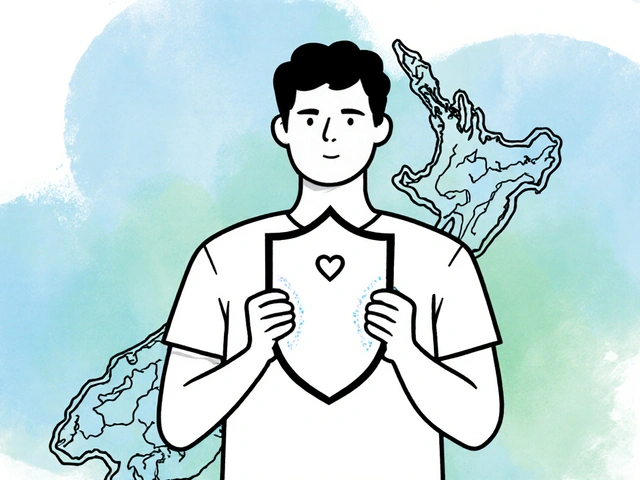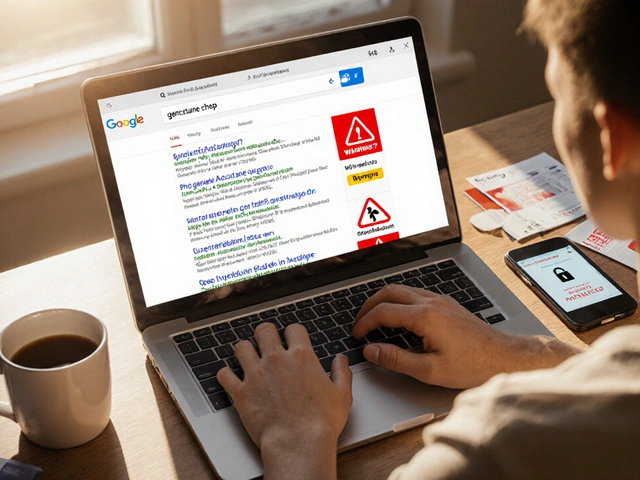
You want the lowest price on generic Plavix without getting scammed or delaying treatment. That’s doable, but there are a few guardrails: clopidogrel (the generic for Plavix) is a prescription medicine, legit pharmacies will ask for that script, and the cheapest path depends on where you live and how fast you need it. I’ll show you the safe shortcuts, the real prices (NZ, US, UK, AU), how to check a pharmacy is legit, and when a different antiplatelet might actually be the smarter pick.
Here’s the promise: you’ll know how to buy generic Plavix online safely and cheaply, when not to delay by ordering online, and how to avoid counterfeits and nasty surprises like customs holds or the wrong dose showing up.
What to expect when you buy generic Plavix online today
Clopidogrel is the generic for Plavix. Same active ingredient, same clinical effect when it’s approved by your regulator (FDA, Medsafe NZ, MHRA UK, TGA AU). In heart and stroke care, it’s a workhorse: used after a heart attack or stent, for some strokes/TIAs, and in peripheral artery disease. The big job? Reduce clotting risk.
Before prices and websites, a quick safety brief so you don’t waste time:
- Prescription is required. Legit pharmacies will ask for it. If a site offers clopidogrel without a script, that’s a red flag.
- Typical maintenance dose is 75 mg once daily. Some people get a one-time “loading dose” (often 300-600 mg) in hospital settings. Your doctor decides that.
- Big risks: bleeding and bruising. Call urgent care for tarry stools, vomiting blood, or unusual bleeding. Report side effects in your country (NZ: CARM; US: FDA MedWatch; UK: Yellow Card; AU: TGA).
- Common interactions: omeprazole and esomeprazole can blunt clopidogrel’s effect (CYP2C19). Ask about alternatives like pantoprazole. Some people have genetic variants (CYP2C19 poor metabolizers) that affect response; your clinician may test if your risk is high.
- Stopping for surgery? Many procedures require pausing clopidogrel 5-7 days beforehand. Never stop without your surgeon/cardiologist’s OK.
Why trust the generic? Regulators require bioequivalence to the brand. The FDA Orange Book, EMA approvals, Medsafe NZ, and TGA AU all apply the same principle: same active ingredient, strength, dose form, and a tight range for absorption. Large trials (like CAPRIE) established clopidogrel’s benefits versus aspirin, and modern guidelines (AHA/ACC, ESC, NICE) detail where it fits. If the generic is approved in your country, it must meet the same standard for effect and safety.
If you’re in New Zealand like me in Auckland, there’s a good chance your cheapest option is not online at all: a funded script filled at a local pharmacy. More on that below. If you’re elsewhere-or you need mail-order for convenience-online can still be smart as long as you stick with licensed pharmacies.
Prices, where it’s cheapest, and how to actually pay less
Two truths about clopidogrel pricing in 2025: it’s widely generic and usually cheap, but the exact out-of-pocket cost varies a lot by country and how you pay. Use these ranges as a realistic guide, not a guarantee.
| Region | Typical Out-of-Pocket for 75 mg | Supply | Where That Price Shows Up | Shipping Time (online) |
|---|---|---|---|---|
| New Zealand | ~NZ$5 co-pay (funded) | 30 tabs | Community pharmacies with a Pharmac-funded script | NZ online mail-order: 1-4 days; international: 7-21 days |
| United States | US$4-10 (with discount) / US$15-40 cash | 30 tabs | Big-box/retail with discount card; mail-order plans | 2-5 business days domestic |
| United Kingdom | ~£10 NHS charge per item | 28 tabs | NHS prescription; private online £5-12 + prescriber fee | 1-3 business days domestic |
| Australia | ~A$30 general / ~A$7 concession (PBS) | 28-30 tabs | PBS pharmacies; private online A$10-25 + shipping | 2-6 business days domestic |
| International mail pharmacies | NZ$10-NZ$30 (US$6-US$18) + shipping | 30 tabs | Licensed overseas pharmacies; prescription required | 7-21 days; customs can add time |
Quick price heuristics that actually save money:
- NZ residents: ask your GP for a Pharmac-funded clopidogrel script. Many scripts cost a small co-pay at the counter. Paying a foreign online pharmacy often ends up more expensive after shipping and delays.
- US shoppers: use a reputable discount card or membership pricing at big-box stores. For mail-order, ask your insurer about 90-day fills; copays are often lower per tablet.
- UK: if you pay per NHS item, a 3-month prepayment certificate can cut costs if you have multiple meds.
- AU: PBS concession cards matter. If you qualify, your out-of-pocket is much lower; ask your pharmacist about safety net thresholds.
- 90-day supply beats 30-day on convenience and usually price per tablet, but only if you know you’ll stay on it and you can store it properly.
Shipping reality check from here in Auckland: domestic pharmacy delivery is usually 1-4 days. International online orders can take 2-3 weeks and occasionally longer if customs inspects the parcel. If your cardiologist wants you on clopidogrel now after a stent, don’t wait for an overseas box-fill locally today and consider mail-order for refills later.
Which strength and pack? Most people use 75 mg daily. 300 mg tablets are sometimes used for loading in acute settings; they’re rarely a money-saver for home use and not a substitute for taking 75 mg four days at once. Don’t split tablets unless your pharmacist says they’re scored and suitable; many clopidogrel tablets are film-coated.
Return policies and fees matter: some online pharmacies charge a prescriber fee for an online consultation even if they decline your order. Read the fine print so you don’t pay twice. Make sure the site lists the manufacturer, country of origin, and the regulator approval (e.g., Medsafe, FDA, TGA).

Safe online buying checklist (so you don’t get burned)
Use this quick process. It’s the difference between legit savings and regret.
- Get a valid prescription. If you don’t have a current script, book your GP or cardiologist. Some licensed online pharmacies offer telehealth with proper checks; they’ll still require your medical history.
- Pick a licensed pharmacy, not a random “.com”. Verify:
- NZ: Check the Pharmacy Council register. Medsafe has guidance on buying medicines online.
- US: Look for NABP accreditation (e.g., .pharmacy) or LegitScript certification.
- UK: Check the GPhC register for the pharmacy and superintendent pharmacist.
- AU: Confirm registration via AHPRA; check TGA information on online medicines.
- Scan for red flags:
- No prescription required or a “tick-the-box” quiz only.
- Prices way below typical ranges in the table above.
- No physical address, no pharmacist contact, or only a webform.
- Shipping from unknown sources, repackaged tablets in baggies, no leaflet.
- Payment by crypto or gift cards only.
- Match the details:
- Drug: clopidogrel
- Strength: 75 mg (unless your doctor specified otherwise)
- Quantity: 30 or 90 tablets
- Directions: usually once daily
- Check the fine print:
- Shipping window and tracking. International: expect 7-21 days.
- Return/refund policy for damaged or wrong items.
- Manufacturer and country of origin listed on the product page.
- Data privacy. The checkout should be HTTPS and the privacy policy should be readable.
- On arrival, verify the product:
- Factory-sealed box or blister packs, intact safety seals.
- Label with your name, prescriber, dosage, lot number, expiry date.
- Package insert/leaflet in your language.
- Tablets look consistent with known images from the manufacturer; if unsure, ask your pharmacist.
- Report issues fast: contact the pharmacy and your regulator if something looks off. NZ: CARM/Medsafe; US: FDA MedWatch; UK: Yellow Card; AU: TGA.
One more safeguard: if you’ve just had a stent or a stroke, do not let mail-order delays break your therapy. Fill the first month locally, then switch to mail-order for repeat supplies once the dust settles.
Comparisons, alternatives, and when you should not switch
Brand vs generic? In regulated markets, clopidogrel generics are bioequivalent to Plavix. You won’t get extra protection by paying for the brand, but you will pay more. Where people get into trouble is not brand vs generic-it’s using unapproved sources that don’t meet regulator standards.
What about other antiplatelets? There are legitimate reasons your cardiologist may choose ticagrelor or prasugrel, especially right after certain types of heart attacks or stenting. After the high-risk period, many patients step down to clopidogrel or aspirin depending on bleeding risk. The right pick isn’t about price alone; it’s about your risk profile and guideline-driven care.
| Drug | Typical Use | Standard Daily Dose | Price ballpark (generic) | Key Pros | Key Cons/Warnings |
|---|---|---|---|---|---|
| Clopidogrel | Post-stent, certain strokes/TIAs, PAD | 75 mg | Usually low | Widely available, cheap, good evidence base | Reduced effect with CYP2C19 inhibitors/poor metabolizers |
| Ticagrelor | ACS with/without stent; often first year | 90 mg twice daily (then 60 mg twice in some) | Moderate-high (brand in many markets) | Faster, more potent platelet inhibition | More dyspnea, bleeding risk; twice-daily dosing |
| Prasugrel | ACS with PCI; certain patients | 10 mg (or 5 mg in lower-weight/older) | Low-moderate (often generic) | Potent; less affected by CYP2C19 | Contraindicated with prior stroke/TIA; bleeding risk |
| Aspirin | Secondary prevention, often combined short-term | 75-100 mg | Very low | Cheap, familiar | GI bleeding/ulcer risk; additive bleeding when combined |
Guidelines to know (by name, so you can check):
- AHA/ACC (2023-2025 updates): dual antiplatelet therapy (DAPT) duration after PCI/ACS; when to choose ticagrelor/prasugrel vs clopidogrel.
- NICE NG185 (UK): antiplatelet use after stroke/TIA.
- Medsafe NZ data sheets and Consumer Medicines Information for clopidogrel.
- FDA Orange Book: therapeutic equivalence for generics.
- Cochrane reviews on clopidogrel vs aspirin and dual therapy in stroke.
When not to switch on your own:
- Within the first months after a stent or heart attack, unless your cardiologist tells you to. Potency and timing matter here.
- If you’ve had bleeding events or you’re scheduled for surgery-changes need a plan.
- If you’re on omeprazole/esomeprazole and don’t have a plan to swap to a PPI that plays nicer (like pantoprazole).
Mini‑FAQ
- Do I need a prescription? Yes. Every legitimate pharmacy will require it.
- Are very cheap Indian generics safe? It depends on the manufacturer and whether your regulator approves that product. Stick to pharmacies that dispense regulator‑approved stock for your country.
- Can I split 75 mg tablets? Usually not recommended; many are film‑coated. Ask your pharmacist.
- Missed a dose? Take it when you remember the same day, but skip if it’s close to the next dose. Don’t double up. Confirm with your pharmacy leaflet.
- Can I take clopidogrel and aspirin together? Often yes after stenting or certain strokes, but only under medical advice because bleeding risk rises.
- How long does mail delivery take? Domestic: a few days. International: 1-3 weeks. Don’t rely on international shipping if you need therapy now.
- Is a 300-600 mg loading dose safe at home? Loading is a clinical decision usually done in acute care. Do not self‑load without medical guidance.
Risks and how to manage them when buying online:
- Counterfeits: avoid no‑script sites and deals far below the normal range; verify the pharmacy with regulators.
- Wrong strength shipped: check the label before opening; contact the pharmacy immediately for replacement.
- Customs delays: order refills when you have at least 2-3 weeks of tablets left; use trackable shipping.
- Therapy gaps: fill locally while waiting for mail‑order.
Ethical call to action: use licensed, regulator‑checked pharmacies; keep your prescriber in the loop; and choose the path that balances cost with safety. A few dollars saved isn’t worth a clot or a bleed.
Next steps and troubleshooting by scenario
- I need it today: Go to a local, licensed pharmacy with your script. In NZ, a funded script usually means a small co‑pay; in the US, bring a discount card; in the UK/AU, use your NHS/PBS benefits.
- I want the lowest legit online price: Compare per‑tablet prices on licensed sites, aim for a 90‑day supply if appropriate, and factor in shipping and any online prescriber fee.
- My doctor wrote “Plavix” but I want generic: Ask the pharmacist to dispense generic clopidogrel unless “no substitution” is written. Most systems allow substitution.
- I’m on omeprazole: Ask if pantoprazole is a better fit while on clopidogrel. This is standard practice noted by regulators and guidelines.
- I’m scheduled for surgery/dental work: Ask your surgeon exactly when to pause and restart. Many procedures require stopping 5-7 days ahead, but your individual risk matters.
- Side effects: For minor bruising, note and discuss. For serious bleeding signs, seek urgent care. Report events via your country’s reporting system.
- Shipping is stuck: Contact the pharmacy, ask for a replacement if lost, and fill a short local supply to bridge the gap.
- I can’t get a GP appointment: Use a licensed telehealth service attached to a registered pharmacy; they’ll review your history properly before prescribing.
Quick reference checklist you can screenshot
- Have a valid prescription.
- Verify the pharmacy with your country’s regulator (NABP/LegitScript, GPhC, Pharmacy Council NZ, AHPRA/TGA).
- Beware of no‑script offers and extreme prices.
- Order 2-3 weeks before you run out if using mail‑order.
- Check label, strength, lot, expiry on arrival.
- Ask about PPI interactions; consider pantoprazole instead of omeprazole/esomeprazole.
- Never self‑stop or self‑switch right after a stent or stroke-talk to your doctor.
Sources behind this advice: FDA Orange Book (therapeutic equivalence), Medsafe New Zealand (clopidogrel datasheet and safe online purchasing), AHA/ACC/ESC guidelines for antiplatelet therapy, NICE guidance for stroke/TIA, Cochrane reviews on antiplatelet strategies, and national subsidy schemes (Pharmac NZ, NHS UK, PBS AU). No single site or coupon beats sticking with licensed supply and following guideline‑based care.
Bottom line: pick the safest legitimate option first, then squeeze price. If you’re in NZ, the funded route at a local pharmacy is usually the winner. If you’re abroad or prefer delivery, choose a licensed mail‑order pharmacy, plan refills ahead, and keep your prescriber in the loop.




14 Comments
Just filled my 90-day clopidogrel script at CVS with the discount card-$7. Total. No shipping, no waiting, no risk. Local pharmacy wins every time.
I used to order from that ‘super cheap’ Indian site everyone talks about. Got a box with tablets that looked like they were printed with a dot-matrix printer. No leaflet. No batch number. Just a plastic bag with ‘CLOPIDOGREL’ handwritten on it. I threw it out. Took the bus to my local pharmacy instead. Paid $12. Felt like I’d just bought peace of mind.
It’s not about saving $5-it’s about not ending up in the ER because your ‘generic’ was actually chalk and glitter. Your heart doesn’t care about your budget. It just wants the right medicine.
I’ve been on this stuff for five years. My cardiologist says I’m lucky to have access to it at all. I don’t take that for granted. Not anymore.
LOL. You people act like buying clopidogrel online is some kind of heist. It’s a 75mg pill. You can buy it in bulk for less than the cost of a latte. If you’re worried about ‘counterfeits,’ maybe don’t live in a country where healthcare is a fucking lottery.
Also, why are you all so obsessed with ‘regulator approval’? You think the FDA gives a damn about your $10 prescription? They’re busy regulating TikTok influencers.
Just get the damn pill. 😅
Let’s be real-this whole post reads like a pharma affiliate blog disguised as public service. Bioequivalence? Please. The FDA’s ‘Orange Book’ is a joke. Most generics have 10-15% variability in absorption. You think your 75mg is the same as Plavix? It’s not. It’s a close cousin.
And don’t get me started on ‘licensed pharmacies.’ The only thing licensed about them is their ability to charge you $40 for a pill that costs $0.07 to manufacture.
Real talk: if you’re not taking ticagrelor or prasugrel after a stent, you’re being under-treated. This whole ‘clopidogrel is fine’ narrative is outdated. NICE guidelines changed in 2023. Did you even read them? Or did you just copy-paste from a Reddit thread?
I grew up in India, then moved to the US. I’ve bought generic clopidogrel from a pharmacy in Mumbai for $2 a month-and from a CVS in Ohio for $12. Both worked. Both saved my life.
What matters isn’t the country or the price tag-it’s whether you’re monitored. Whether you tell your doctor what you’re taking. Whether you know the signs of bleeding.
Some of us are lucky enough to have access to both worlds. That doesn’t make one better. It just makes us more aware. Don’t judge someone for choosing the cheaper option. Judge them for skipping the check-up.
Medicine isn’t a competition. It’s a lifeline.
just wanted to say thank you for this post!! i’ve been on clopidogrel since my stent last year and honestly i was terrified of ordering online bc i didn’t know what to look for. this checklist saved me. i ordered from a legit uk pharmacy with tga approval (yes, i’m in the us but they ship) and it arrived in 10 days with the leaflet and everything. also, switched from omeprazole to pantoprazole like you said and my stomach stopped screaming at me. 😭
ps: i think i typoed ‘pantoprazole’ like 5 times before i got it right lol
So… if I’m in India and my local pharmacy sells me 75mg clopidogrel for ₹12 a tablet, and I know the manufacturer is approved by CDSCO, why should I care about FDA or TGA? I’m not importing to the US. I’m not breaking any laws here.
Also, why is everyone so scared of ‘unapproved’ sources? If the pill works and I’m not dying, isn’t that the point?
Also, why do Americans act like they invented medicine? We’ve been making generics since the 80s. Chill.
Everyone’s so concerned about ‘safety’ and ‘regulators’ but no one’s talking about the real issue: the system is rigged. Your ‘funded script’ in NZ? That’s taxpayer money subsidizing a drug that costs 3 cents to make. Your ‘discount card’ in the US? That’s a marketing gimmick to keep you loyal to the pharmacy chain. Your ‘licensed pharmacy’? Still charging you $10 for a pill that should be free.
They want you to feel grateful for the crumbs. Don’t be. The real crime isn’t buying online-it’s letting them control the narrative.
Also, ‘don’t self-load’? Who the hell is self-loading? This isn’t a thriller movie. 😒
Let’s deconstruct the bioequivalence claim. Per FDA guidance, a generic must demonstrate 80-125% AUC and Cmax range relative to the innovator. That’s a 45% window. That’s not equivalence. That’s statistical tolerance. In pharmacokinetics, that’s a wide margin for failure.
Additionally, excipients vary. Some generics use magnesium stearate from unregulated sources. This affects dissolution profiles. Clinical outcomes? Not always captured in post-market surveillance.
And the ‘$4 discount card’? That’s a rebate negotiated between the PBMs and the pharmacy. You’re not saving money-you’re being funneled through a third-party financial instrument designed to extract value from vulnerable populations.
Bottom line: you’re being sold a myth. Clopidogrel isn’t cheap. The system is just optimized to make you think it is.
Bro… why are we even debating this? 😅 I bought clopidogrel from a website that said ‘Made in China’ and it worked. No problems. No bleeding. No weird side effects. My BP is fine. My heart doesn’t complain. So what if it’s not FDA-approved? I’m not in the US. I’m in India. I pay ₹15. I’m happy. 🤷♂️
Also, if you’re still on clopidogrel after a stent, you’re doing it wrong. Go for ticagrelor. It’s better. Period. 🚫💊
And yes, I split the tablet. Why not? It’s not like it’s a time-release rocket ship. 😎
While I appreciate the comprehensive overview provided, I must emphasize the importance of adhering to nationally recognized pharmacovigilance frameworks. The reporting of adverse drug reactions through CARM, MedWatch, Yellow Card, and TGA systems is not merely procedural-it is foundational to the integrity of the global pharmacopeia.
Furthermore, the assertion regarding bioequivalence assumes uniform manufacturing quality control across all jurisdictions, which is not empirically verifiable without access to batch-specific dissolution profiles and stability data. In the absence of such transparency, reliance on regulatory accreditation remains the most robust safeguard.
Lastly, I urge all patients to maintain direct communication with their prescribing physician regarding any therapeutic substitutions, regardless of cost considerations. Clinical judgment supersedes economic optimization in cardiovascular care.
Just got my refill from the mail-order pharmacy. Took 12 days. No issues. No customs drama. Took the 90-day supply like the post said. Saved $20. No drama.
Also switched to pantoprazole. My stomach still works. Win win.
Don’t overthink it. Do the checklist. You’ll be fine.
Correction: The FDA Orange Book does not establish ‘bioequivalence’ per se-it designates therapeutic equivalence ratings (AB ratings) based on rigorous review of in vivo and in vitro data. The 80-125% confidence interval for AUC and Cmax is a statistical criterion, not a margin of error. Variability is controlled, not tolerated.
Additionally, the claim that ‘clopidogrel generics are identical to Plavix’ is imprecise. They are therapeutically equivalent under regulatory standards, but not chemically indistinguishable. Excipient profiles differ, and these can influence bioavailability in patients with altered GI motility or pH.
Finally, the reference to ‘CYP2C19 poor metabolizers’ requires clarification: genetic testing is not routinely recommended by AHA/ACC unless there is a history of stent thrombosis despite therapy. Routine genotyping remains investigational in most clinical settings.
Reading all this… I think the real issue isn’t the pill. It’s the fear. Fear that if we don’t follow the ‘right’ path, we’ll die. Fear that if we save money, we’re being reckless. Fear that if we trust a pharmacy in another country, we’re gambling.
But here’s the quiet truth: people have been saving their own lives with generics for decades. In rural Mexico. In rural India. In rural Kentucky. They don’t have NABP seals or TGA certifications. They have neighbors who’ve taken the same pill. They have doctors who say, ‘It’s fine.’
Maybe the real safety isn’t in the label. Maybe it’s in the community that holds you up when you’re scared.
Don’t let the system make you feel guilty for wanting to live.